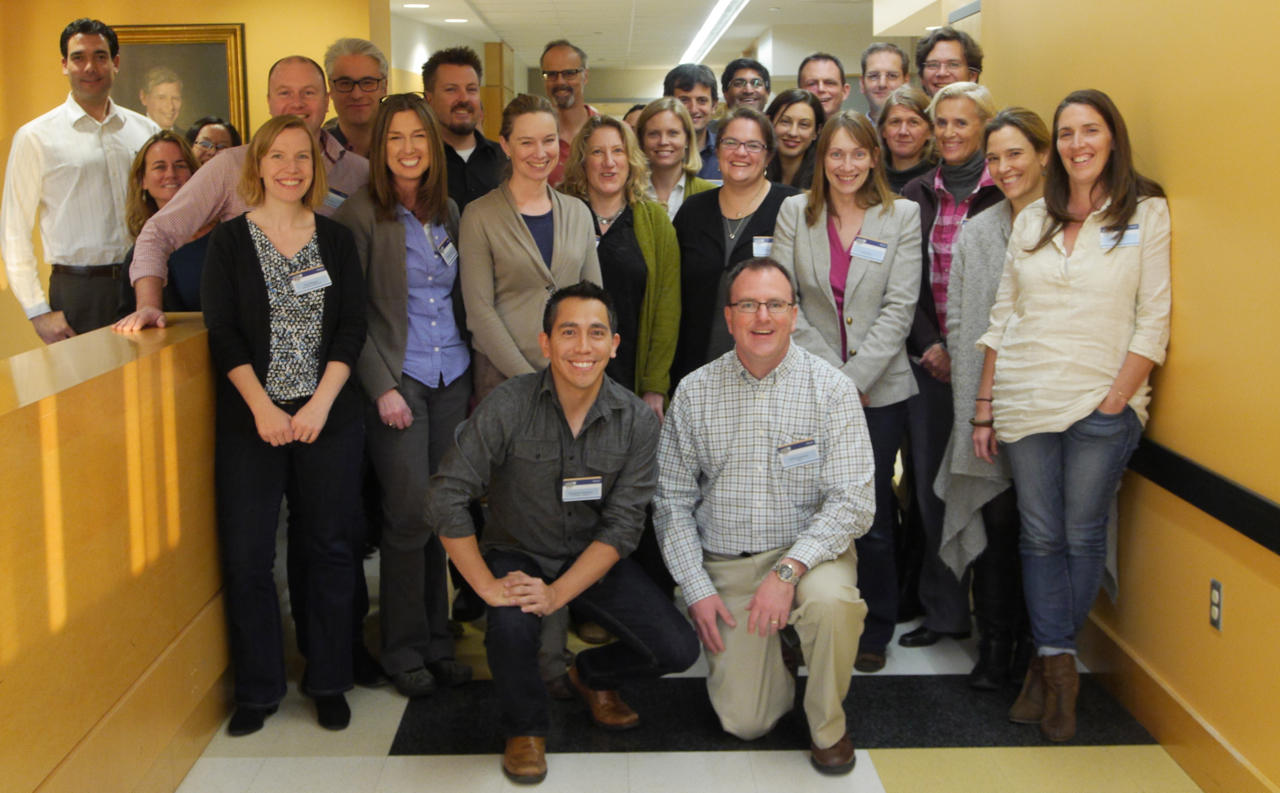Annual symposium drives innovative research between CIRM-HSCI scientists
The organizers of this year’s Harvard Stem Cell Institute/California Institute for Regenerative Medicine Junior Faculty Symposium knew that it was time to rebrand. The 40 regulars who have been participating in the annual meeting since September 2007 aren’t as junior as they used to be. (Many now sport full professorships and a few gray hairs.) And so, the eighth of these symposiums, held last week at Massachusetts General Hospital, was simply called Stem Cells 2.0: Harvard/California.
The intimate, two-day conference was a rare opportunity for researchers at two of the world’s biggest stem cell hubs to discuss unpublished data, receive critical feedback, and form cross-country collaborations. As part of the agenda, each participant gives fifteen-minute updates on his or her work and answers a few questions. These presentations are bookended by a welcome gathering the night before the conference begins, a formal dinner (this year held at Boston's Liberty Hotel), and a concluding wine reception.
“The fifteen minutes is to tell everybody what you’ve been up to and the rest of the meeting, people are coming up to you and saying, You know, I’ve thought about your data, and you should really be thinking about this, or We have a certain thing that we’re doing and does it fit with yours?” explained 2014 co-organizer David Langenau, PhD, who runs a lab at Massachusetts General Hospital. “I really think that’s the power of this meeting.”
Since 2007, the interactions that take place during the Harvard/California event have led to new directions for research and several major collaborative papers. This includes a 2013 report that cancer stem cells actively remodel the environment of the bone marrow so that it is more hospitable to diseased cells. The research came out of work and insights shared between Emmanuelle Passegué, PhD, at the University of California, San Francisco, and Amy Wagers, PhD, at Harvard.
“People come back every year and so you can actually see the data and their stories progress,” said fellow meeting co-organizer Fernando Camargo, PhD, of Boston Children’s Hospital and the Harvard Department of Stem Cell and Regenerative Biology. “This is a group of people who are growing together, and I think it could be a good model for other meetings.”
The presentations also follow no set order of topics. A scientist discussing liver development or single cell-analysis of cancer may follow a colleague presenting on fruit fly egg genesis. The randomness, said the co-organizers, encourages cross-pollination of ideas and adds to the excitement of the symposium.
The original idea for the meeting grew out of separate efforts to network with other junior investigators by Wagers, Leanne Jones, PhD, of the Salk Institute for Biological Studies, and Niels Geijsen, PhD, formerly of Harvard Medical School and now at the Hubrecht Institute in the Netherlands. A 2007 Cell Press article tells the story of how the three worked together to organize a joint conference for new stem cell faculty from the East and West Coasts. All were present at the 2014 symposium.
“It began as a group of crazy young investigators who all were in the same boat starting their labs,” said Geijsen. “I don’t think we expected the symposium to last so long and still be so great.”
“A lot of it has to do with the group and personalities,” added Jones. “It’s the meeting everyone looks forward to and I think it has to do with this combination of incredibly high rigorous science and it being unpublished, and people looking for feedback and interactions.”
Jones and others said that the conference’s model could be instituted anywhere for any subject or group. The small size of the meeting makes it manageable, helping to nurture lasting friendships that add to the sharing environment.
“This is my favorite meeting to come to,” said Harvard’s Amy Wagers. “It’s like coming home for the holidays.”
Stem Cells 2.0: Harvard/California was sponsored by the Harvard Stem Cell Institute, Massachusetts General Hospital, Abcam, BD Biosciences, and Fluidigm.

